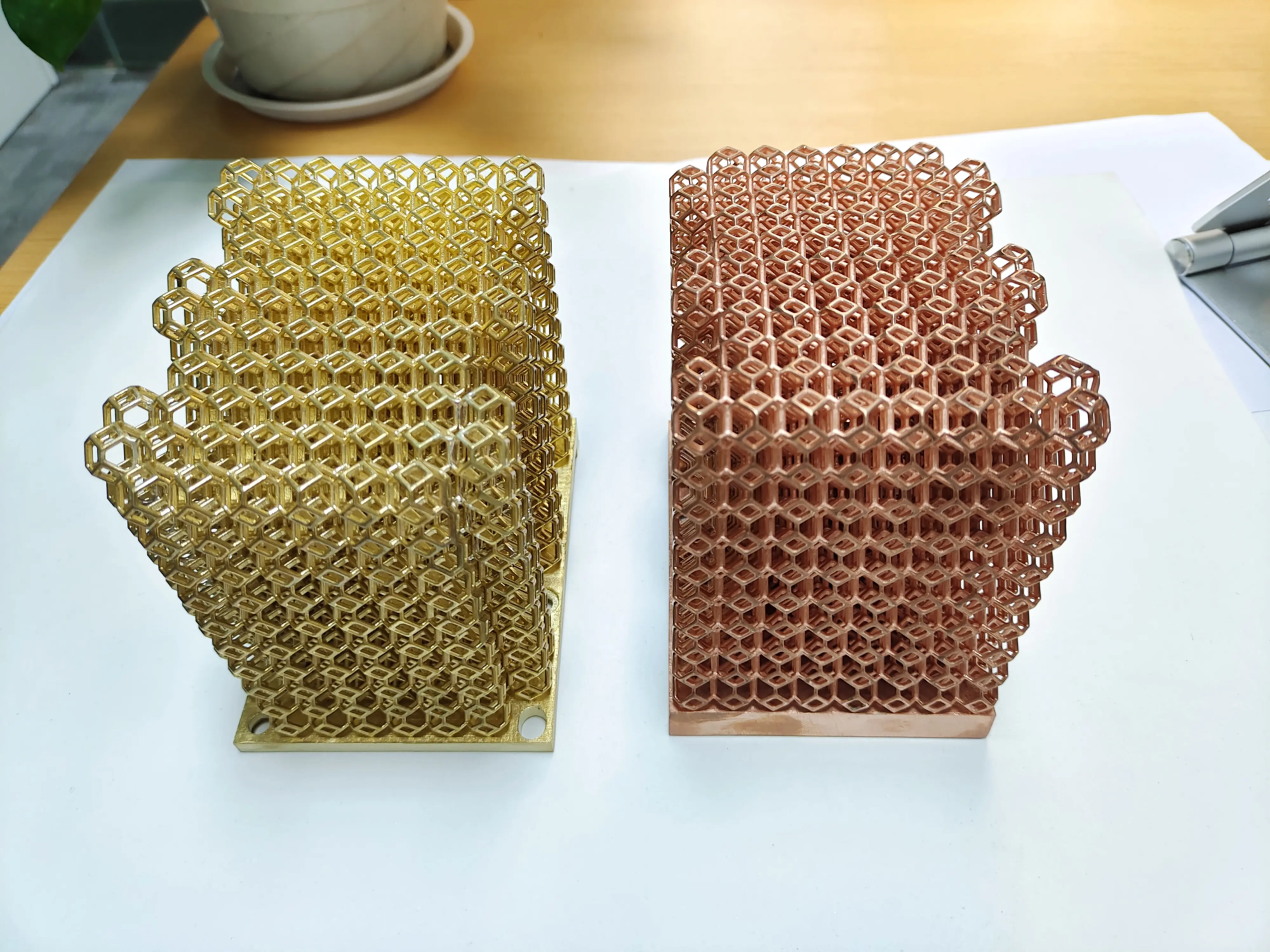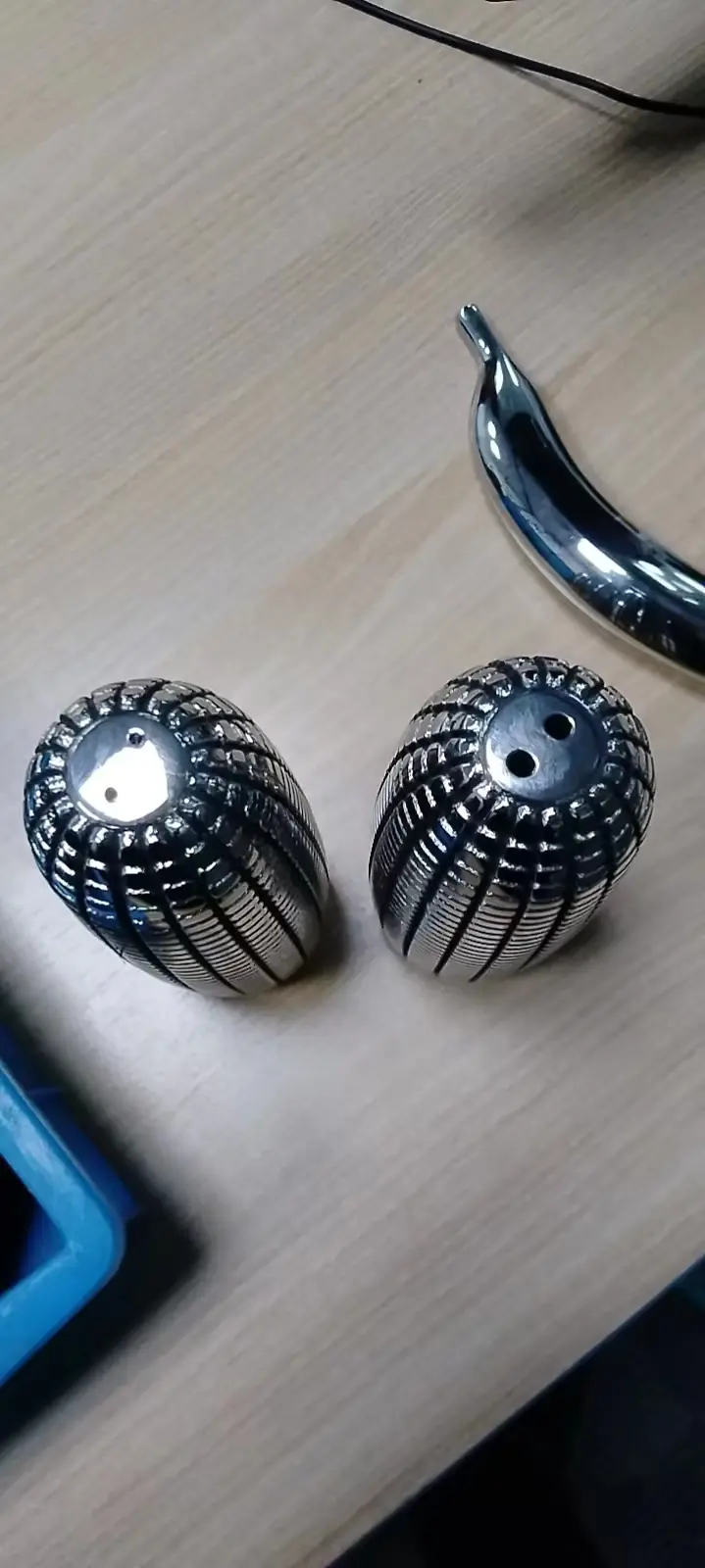Unlocking the perfect finish: How iron-on technology can transform your 3D printing
Despite all the incredible capabilities of 3D printing, one ongoing challenge is achieving a truly smooth, professional-looking surface directly from the printing plate. These characteristic layer lines, while a testament to the additive manufacturing process, may reduce aesthetics and functionality. Enter ironing – Advanced slicer functionality revolutionizes the pursuit of print perfection, delivering surfaces that typically require minimal post-processing. As a leader in professional rapid prototyping, GreatLight leverages this technology to deliver superior metal and polymer parts for demanding applications every day.
What exactly is ironing in 3D printing?
Imagine the precision of a heated iron gently gliding over fabric to remove wrinkles. Ironing in 3D printing works very similarly, but the ironing is done on the top layer of the printed object.
This smart functionality is integrated into modern slicer software (e.g. Cura, PrusaSlicer) to handle the final top layer in different ways. Instead of extruding the last layer of new plastic in the traditional way, the print head moves Exceed Plastic has been extruded with the hot nozzle close to the surface. It is crucial to:
- Minimum squeeze: A small, highly controlled amount of filament (usually less than 10% of the normal flow rate) will seep out.
- Reduce speed: The nozzle moves significantly slower than during standard fill or perimeter.
- Exactly close: The nozzle is positioned very close to the top layer, applying only gentle heat and pressure.
- Processing path: It crosses within the top boundary in a specific pattern, usually back and forth in alternating directions.
Effective combination of nozzle waste heat, minimal molten material and careful pressure smooth and melt Existing top layer. This reflows the plastic slightly, filling in the small gaps between existing lines and creating a noticeably flatter, glossier and more uniform surface. Think of it as local hyper-accurate thermal smoothing.
Why spend time ironing? tangible benefits
In addition to aesthetics, iron-on offers specific advantages, especially for functional prototypes and end-use parts:
- Enhance aesthetics: The most obvious benefit. Ironing greatly reduces the visibility of the top surface layer lines, creating an almost professional finish that is comparable in appearance to injection molding or CNC machining.
- Improve preparation for painting/coating: The smooth top surface is an excellent base for painting, staining or other coatings. Paint adheres evenly, minimizing primer needs and preventing "textured" Look at the layer lines created under the paint.
- Better functional surfaces: For parts that require fluid contact, optical clarity (clear printing), or low friction, a smoother top layer can significantly improve performance. Think reservoirs, light guides or sliding interfaces.
- Reduce manual post-processing: Sanding top surfaces, especially those of complex parts, can be tedious, destructive (removing detail), and create dust. Ironing greatly reduces or even eliminates the need for initial top layer sanding.
- Improve dimensional accuracy (subtle): By filling in tiny gaps and smoothing out tiny peaks, ironing can make the top surface more accurately reflect the intended design dimensions.
Master the Art: Ironing Settings for Best Results
Ironing is not an easy task "switch" change. Mastering it requires understanding key parameters:
- Ironing pattern: Linear patterns generally provide the smoothest results. Concentric is useful for round parts, but may make seams more obvious.
- Ironing flow rate (key setting!): Usually between 5% and 15%. Crucially, start low (e.g. 5-7%) and gradually increase. Too high will create ridges or "excessive ironing" Spotted area. This is often the most critical adjustment.
- Ironing speed: Slower speeds (15-30 mm/s) allow for more heat transfer and smoothing, but increase time. Find a balance between speed and quality of finish.
- Ironing distance: The distance between each ironing path (default is usually around 0.1 mm). Smaller spacing increases time but improves consistency.
- Ironing temperature: Sometimes, slightly increasing the nozzle temperature (5-10°C) during the ironing phase can improve material flow. Test carefully.
- Enable ironing only on the top layer: Self-explanatory! Make sure it’s aimed at the surface you want.
- Illustration (margin): Avoid ironing around the edges of the top layer to prevent an edge-like effect on vertical surfaces. Start from the default value (~0.2mm).
Pro Tips from the GreatLight Prototyping Lab: Material issues! Ironing works great on PLA, PETG and ABS. TPU can be ironed with extreme care (very low flow/speed) but results may vary. Experiment on the calibration square first! Metal prints processed through SLM machines specifically designed for durability more reliably gain the benefits of smoothness through annealing or machining, which we integrate as part of our post-processing services.
Ironing vs. traditional finishing: finding the right tools
Ironing the top works great, but it has limitations:
- Top layer only: No impact on sides or complex overhangs.
- Material restrictions: Not all materials react the same way.
- Timing and Calibration: Increases print time and requires adjustment.
This is where the supplemental post-processing shines:
- Sanding/Steam Smoothing (ABS/ASA): Critical for vertical surfaces and overall layer line removal. Provides full smoothing, but is labor intensive (sanding) or requires specialized equipment (steam smoothing).
- Primer/Spray Paint: After obtaining a smooth base by ironing/sanding, it is necessary for color and enhanced protection.
- Professional machining (Fuelite’s specialty): For metal prototypes that require ultimate dimensional accuracy, surface finish (Ra/Rz values) and complex geometries, our CNC milling, turning, EDM and polishing services deliver superior and consistent results beyond what printing alone can achieve.
Think of ironing as a powerful tool period Print to minimize postal– Carry out printing work on the key top surface. It fits nicely into a comprehensive decluttering strategy.
Conclusion: Improving quality where it matters
Iron-on is more than just a slicing trick; it represents a major leap forward in bridging the gap between the inherent layering of FDM/FFF printing and the expectation of a smooth functional surface. By intelligently utilizing heat and controlled material flow on the final layer, it enables tangible aesthetic and functional improvements, saving valuable post-processing time and effort.
At GreatLight, as a leader in rapid prototyping companies, we know that surface quality is not just about appearance, but also about performance, functionality and meeting tight tolerances. Whether optimizing iron-on parameters for initial prototypes or deploying advanced metal post-processing techniques including precision machining, heat treatment and surface finishing on our state-of-the-art SLM machines, our mission is to transform your digital designs into flawless physical reality. We combine cutting-edge technology with deep materials science expertise to deliver One stop solutionfrom rapid prototyping to final production parts, ensuring every surface meets your exacting standards.
Ready to experience the GreatLight difference? Instantly customize your precision rapid prototyping parts with a smooth, professional finish. Get precisely delivered high quality metal parts at the best prices and fastest delivery times.
Frequently Asked Questions (FAQ) about Ironing 3D Prints
Q1: Is the surface completely smooth and shiny after ironing?
A: It’s very close, but not always Perfect Microscopically flat. The extent depends greatly on the material, initial layer quality and ironing settings. It visibly reduces texture and creates a high-shine shine. For optically clear components or microfluidics, polishing/machining by a professional service such as GreatLight may still be required.
Q2: Why does my ironing leave lines or make the surface worse?
Answer: The most common culprits are Ironing flow rate is too high. Start low (5-7%) and gradually increase. Other reasons: too high speed, nozzles too far/too close, or insufficient top layer thickness (make sure you print several dense top layers properly before ironing). Material temperatures may also vary slightly. Always run a calibration test.
Q3: Will ironing significantly increase printing time?
A: It does add time, mostly because of the slower speed. The increase depends on the top surface area. For large, flat surfaces, it can be noticeable. However, the added time is usually far less than the time saved by avoiding extensive sanding or filling. Evaluate trade-offs based on part importance.
Q4: Can I use iron-on on any material?
Answer: Mainly PLA, PETG and ABS have excellent results. thermoplastic polyurethane able Can be ironed, but requires ultra-low flow and speed; it has the risk of dragging/dripping. Higher temperature materials (nylon, PEEK, ASA, PC) are trickier – without adjusting upwards from normal printing temperatures, the ironing temperature may not be high enough to reflow them effectively.
Q5: If I only iron the top, how to iron the sides?
A: The side requires a different approach. Sanding (wet sanding usually works better) is easiest to achieve. For ABS/ASA, chemical vapor smoothing is very effective. For professional-grade metal or polymer parts like those produced by GreatLight, techniques such as tumbling, sandblasting, polishing or precision CNC machining are used to achieve uniform surface quality throughout.
Q6: Can GreatLight apply iron-on technology or advanced smoothing to my prototype?
Answer: Of course! For polymer prototypes that require the best possible surface finish, we optimize all print settings, including utilizing techniques such as calibrated ironing where applicable. Additionally, for metal parts produced using our advanced SLM printers and polymer parts requiring superior or comprehensive surface quality, our A full set of professional post-processing services – Including CNC machining, polishing, sand blasting, anodizing, electroplating, heat treatment and custom coating – all from a single source. We ensure that your prototype not only functions perfectly, but also meets the highest visual and tactile standards, regardless of complexity.





